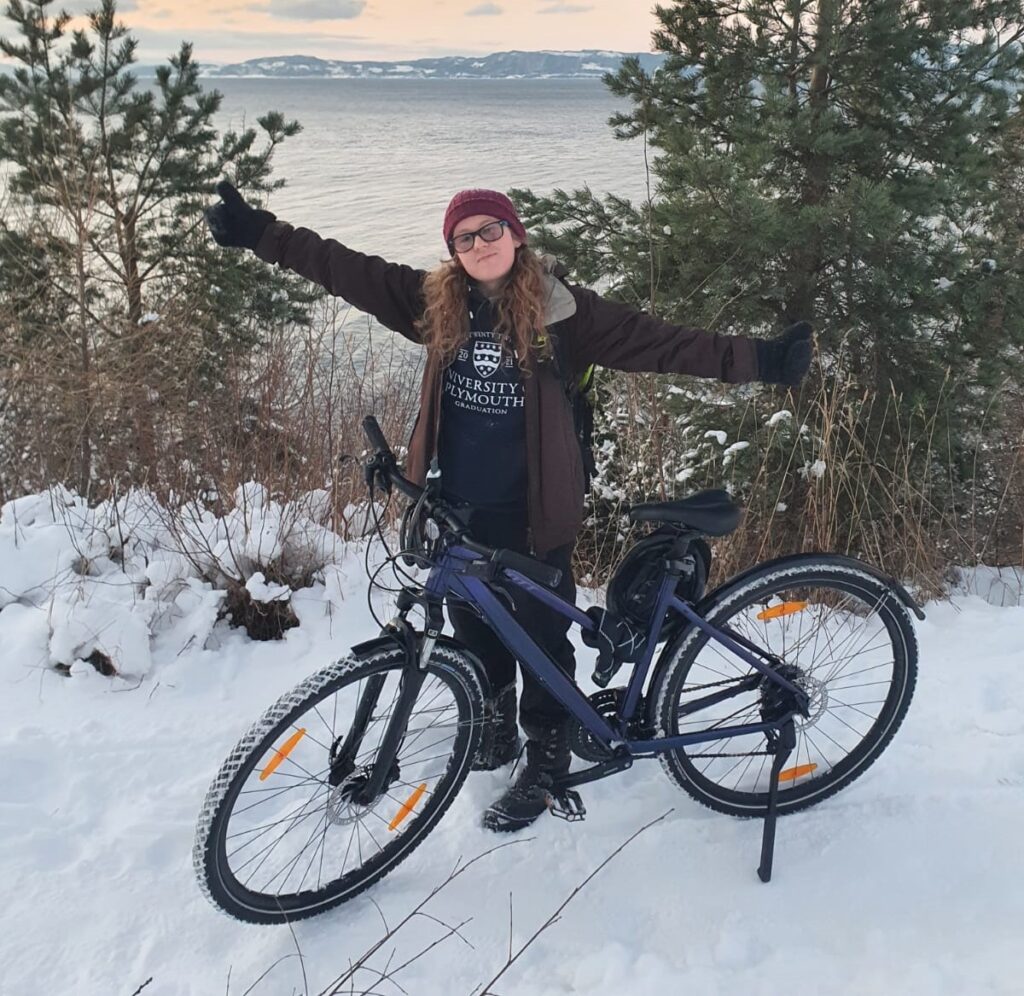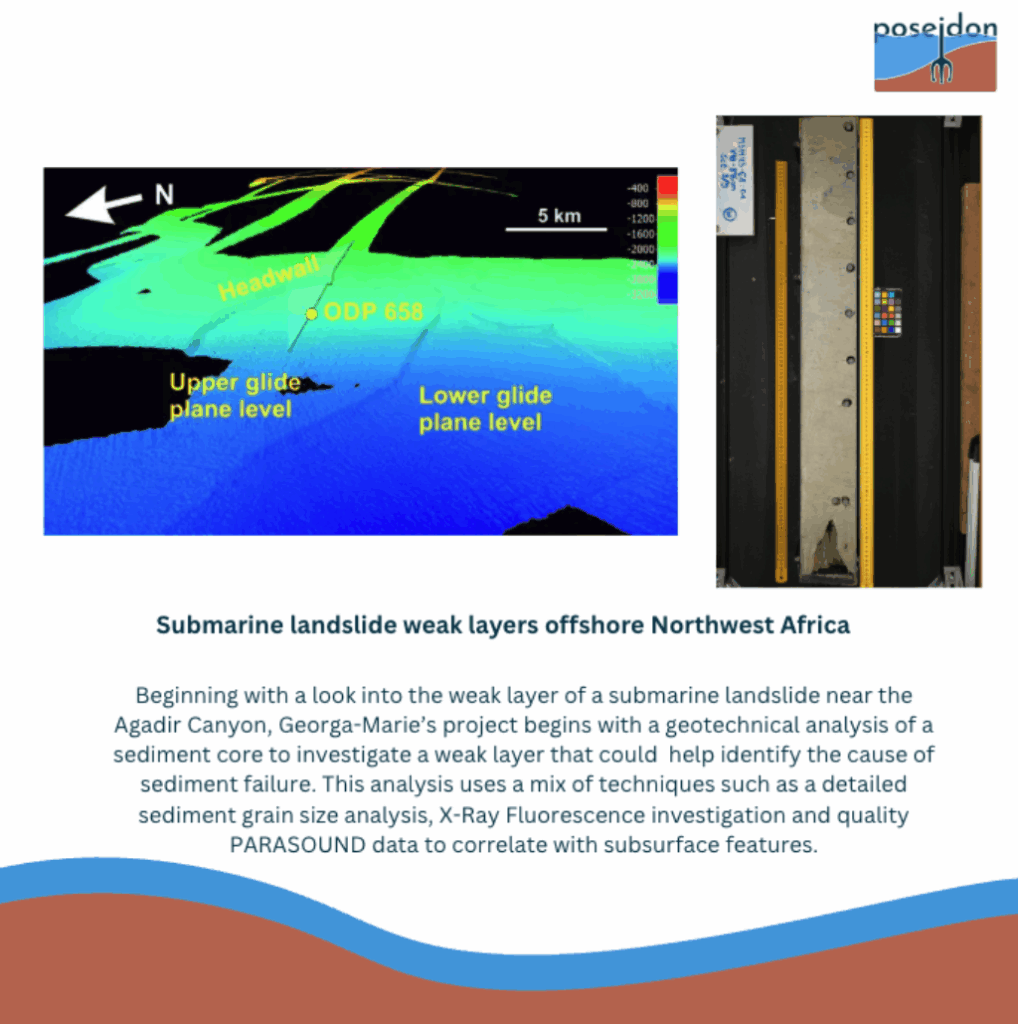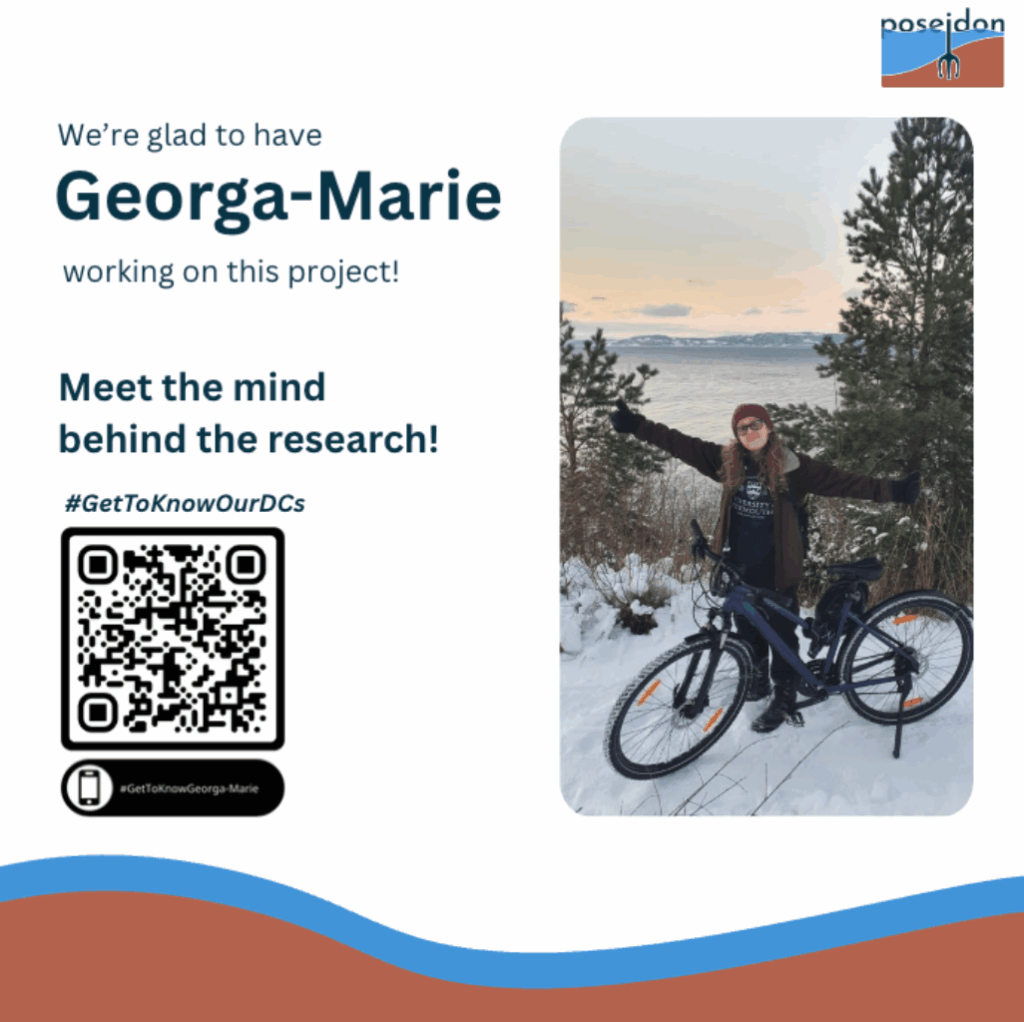About myself
Hi everyone! I’m Georga-Marie and I’ve recently relocated to Christian-Albrechts University of Kiel (CAU) (1*), Germany to become part of the POSEIDON Doctoral Training Network.
I’m a Marine Geologist originally from England, where I received my bachelor’s degree in Geology and Ocean Science from the University of Plymouth (2*) and then a year later, I received a Study Abroad Studentship from the Leverhulme Trust (3*) which allowed me to study my master’s in Marine Geology at the University of Tromsø (UiT), Norway (4*). Whilst studying at UiT I had many opportunities to take part in academic activities, such as research cruises, field-trips and summer schools, the latter of which led me to applying for my current position here at CAU.
Information about my project:
The official title of my project is “Size and distribution of submarine landslides at passive continental margins offshore Northwest Africa” and is somewhat self-explanatory. I am researching submarine landslides offshore the coast of Northwest Africa using 2D seismics, PARAOUND data and sediment cores.
The project begins with the small study area near the Agadir canyon, where I am using geotechnical investigation techniques to analyse a sediment core taken from above the headwall of a landslide. This sediment core has hopefully breached an intact weak layer that we can identify through analysis of this geotechncical data. This is what I am currently working on, however the project will grow to incorporate the investigation of sediment waves found at the study location and eventually build towards investigating the distribution of multiple submarine landslides in the region. The goal is to start small and build up.
Why POSEIDON?
My colleagues have introduced POSEIDON previously, so for more information, feel free to explore the POSEIDON site and hear from them. So I’ll just jump straight into how I found POSEIDON and why I felt it would be something worth applying for.
As I mentioned previously, I took part in many activities whilst studying for my master’s at UiT, one of these was a summer school belonging to the BridgET Erasmus+ programme (5*). Whilst there I met with Sebastian Krastel, who gave a talk about hazards offshore Mt. Etna and the Mediterranean. After leaving the summer school I kept in touch and was notified to the release of DC positions when they were announced in Early 2024.
The position I applied for fit my previous experience and future goals quite nicely. The topic was related to my master’s thesis, so I felt comfortable going into the project with my level of knowledge and it also opened the possibility to work more with seismic interpretation and processing, something I was introduced to at UiT and wanted to learn more of.
My main reason for applying for the POSEIDON position was the research topic itself, however it came with the added benefit of being part of a training network. This has already allowed me to meet and work alongside the rest of the Doctoral Candidates, as well as visit other research institutions to conduct my study from other professionals in my field and gain more experience from a variety of sources. I have already visited the University of Aarhus and the University of Twente, and later this year I will travel to the University of Stockholm for three months to take part in my first long-term secondment, which I am very eager about.
I have already had a number of great experiences and opportunities, and I am only six months in, so I’m excited to see how the next two-and-a-half years are going to pan out!
Don’t forget to check out the rest of our Doctoral Candidates to see what they’re getting up to on their POSEIDON journeys!






